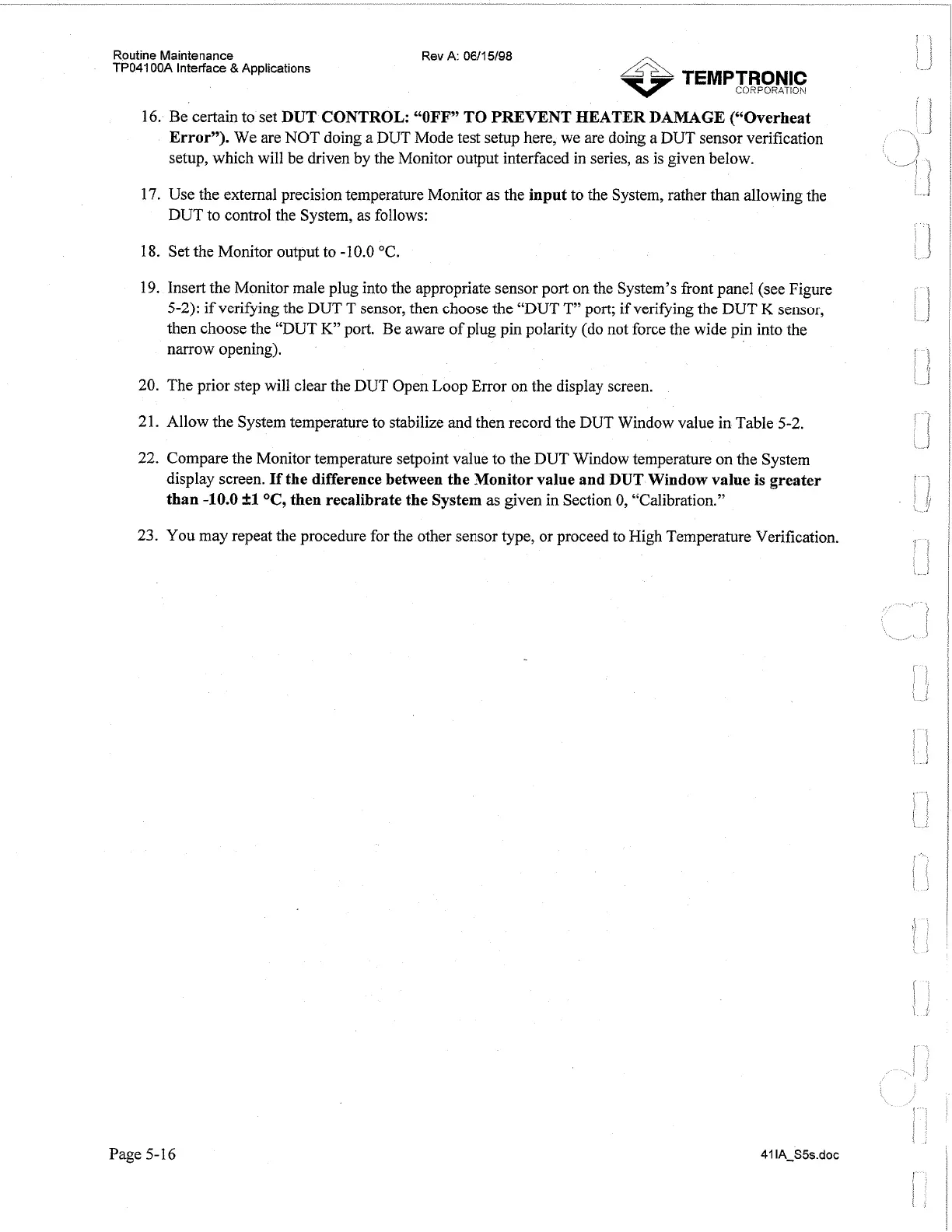Routine Maintenance
TP04100A Interface
&
Applications
Rev A: 0611
5/98
16.
Be certain to set
DUT CONTROL:
"OFF"
TO PREVENT HEATER DAMAGE ("Overheat
Error").
We are NOT doing a DUT Mode test setup here, we are doing a DUT sensor verification
setup, which will be driven by the Monitor output interfaced in series,
as
is given below.
17.
Use the external precision temperature Monitor as the
input
to the System, rather than allowing the
DUT to control the System, as follows:
18.
Set the Monitor output to -10.0 OC.
19. Insert the Monitor male plug into the appropriate sensor port on the System's front panel (see Figure
5-2): if verifying the DUT T sensor, then choose the "DUT T" port; if verifying the DUT
K
sensor,
then choose the "DUT
K"
port. Be aware of plug pin polarity (do not force the wide pin into the
narrow opening).
20. The prior step will clear the DUT Open Loop Error on the display screen.
21. Allow the System temperature to stabilize and then record the DUT Window value in Table 5-2.
22. Compare the Monitor temperature setpoint value to the DUT Window temperature on the System
display screen.
If
the difference between the Monitor value and DUT Window value is greater
than
-10.0
+1
OC,
then recalibrate the System
as
given in Section
0,
"Calibration."
23. You may repeat the procedure for the other sensor type, or proceed to High Temperature Verification.
Page 5-16
Artisan Technology Group - Quality Instrumentation ... Guaranteed | (888) 88-SOURCE | www.artisantg.com
